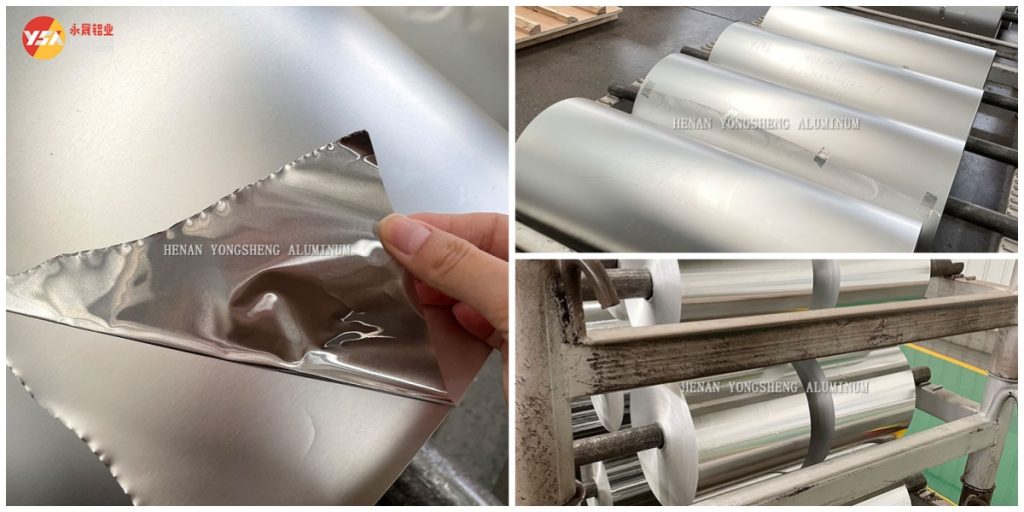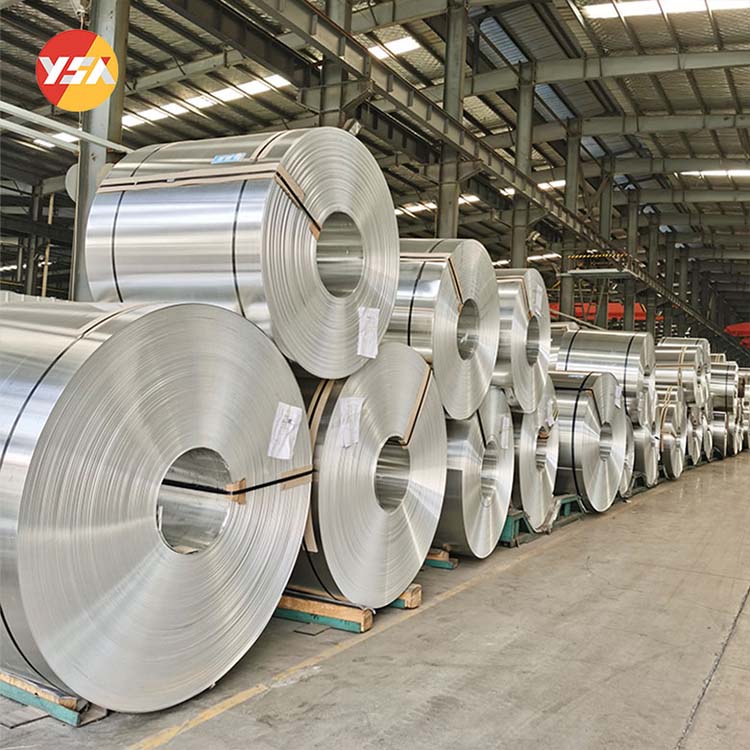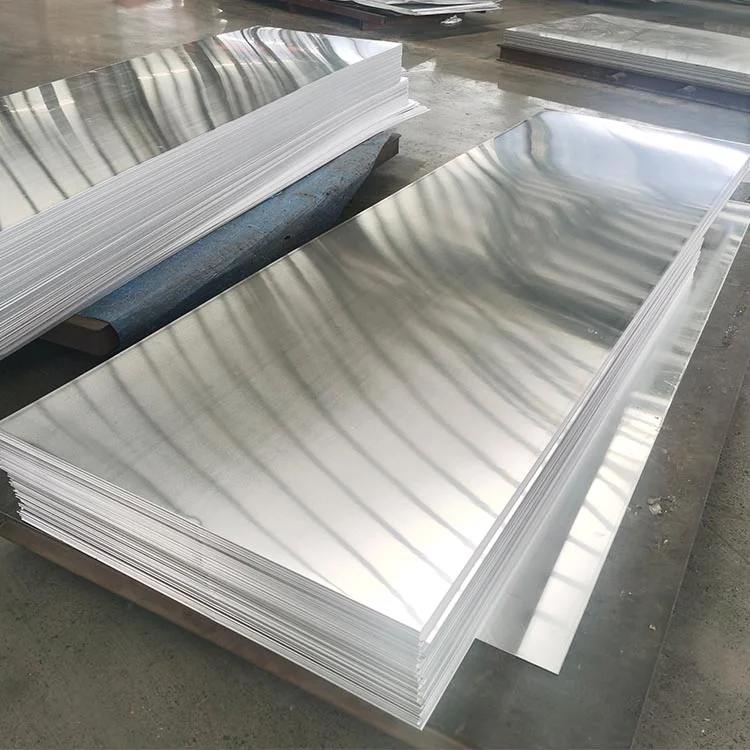Over 900,000 tons of household aluminum foil rolls are sold globally annually, yet a significant amount ends up in landfills due to its thickness of only 10–20 µm and its susceptibility to oil and dirt. However, 8011 or 1-series alloys offer a recycling value of up to 95% of virgin aluminum ingots, yet require only 5% of the energy required to remelt them. In other words, recycling a 10g sheet of clean aluminum foil saves 0.14 kWh of electricity, enough to power a 10W LED light for 14 hours.

Aluminum Foil Roll Materials and Structure
Alloy System
- 8011: 0.6–1.0% Fe, 0.5–0.9% Si. This alloy combines deep-drawing performance with pinhole control, accounting for over 80% of household foil.
- 1050/1060: ≥99.5% Al, used in baking mats requiring higher electrical and thermal conductivity.
Coating Risks
Commercially available “non-stick baking foil” often has a 2–4 µm PTFE or silicone oil coating. This composite layer requires specialized solvents to remove and cannot be processed by traditional recycling plants, so it should be considered dry waste.
Six Steps in Household Aluminum Foil Recycling
Terminal Sorting
- Cleaning: 50°C warm water with a neutral detergent can remove over 90% of grease. Experiments show that melting losses are ≤1% when the residual oil content is <3%.
- Agglomeration: The recovery rate of aluminum spheres ≥5 cm in diameter can be increased from 60% to 92% in an eddy current separator.
Collection and Compression
Domestic sanitation trucks generally use barreled compression, which can easily cause low-density aluminum foil to be blown away. Pre-compacting aluminum foil into agglomerates can significantly reduce transportation dust and waste.
Sorting and Crushing
Aluminum recycling plants use a three-step process: magnetic separation, eddy current separation, and X-ray separation to separate aluminum from other metals and plastics. Aluminum foil thinner than 15 µm, if not clumped, will be mistakenly identified as paper dust in the airflow sorting section.
Paint Removal and Melting
8011 foil typically has a 1–2 µm epoxy/polyester printed layer on its surface. The organic coating evaporates in a melting furnace at 800°C, followed by treatment in a secondary combustion chamber at 1100°C. VOC emissions are below 20 mg/Nm³, meeting EU Directive 2010/75/EU.
Alloy Adjustment
Recycled aluminum is monitored in real time by spectrometers. By adding master alloys such as AlMn10 and AlTi5B1, it can be recast and rolled into 8011 or 3003 coils, with performance differences of less than 2% compared to virgin aluminum.
Life Cycle Assessment
According to IAI 2023 data, recycling 1 ton of household aluminum foil can reduce CO₂e by 9.3 tons, equivalent to the emissions of a passenger car driven 55,000 kilometers.

Common Misconceptions and Countermeasures for Aluminum Foil Recycling
- Myth 1: Greasy aluminum foil can be “incinerated with waste to generate electricity.”
- Fact: Incineration of food fats and oils at 850°C produces dioxin precursors, and aluminum ash residue must be managed as hazardous waste, which is more expensive.
- Myth 2: Aluminum foil and cans can simply be flattened together.
- Fact: Cans have a wall thickness of 0.25–0.35 mm and can be co-melted with aluminum foil, but additional crushing is required. Residential use does not require separation, but recycling stations should package them separately to improve melting efficiency.
Promoting Aluminum Foil Recycling in Various Regions
- EU: Starting in 2025, all aluminum foil used in food packaging must be labeled “Alu-100% Recyclable” and include a QR code to guide consumers on cleaning instructions.
- China: Shanghai and Shenzhen have included “clean aluminum foil” in the list of low-value recyclables for subsidy, and recycling companies can receive a government subsidy of 200–300 yuan per ton.
- Business Case: Hema is collaborating with a recycled aluminum company to recycle 180 tons of household foil by 2024, producing 120 tons of recycled 8011 rolls for its own-brand baking pans, achieving a closed-loop recycling system.
Consumer Action List
Purchase
Prioritize “uncoated pure aluminum” rolls, avoiding PTFE or paper-plastic composites.
Use
Calculate the amount before cutting to reduce waste; lightly greasy items can be flipped over and reused.
Recycling
- Rinse → Air dry → Roll into a ball (diameter ≥ 5 cm).
- Dispose of in your community’s “recyclables” bin. If there’s no separate collection service in your area, accumulate at least 1 kg and contact mini-programs like “Ala Environmental Protection” to schedule a home visit.
Recycling household aluminum foil rolls isn’t a technical challenge; it’s a systematic project: From product design and consumer behavior to recycling networks and policy incentives, improving efficiency by 5% at each stage can give 90% of aluminum foil a second life.


